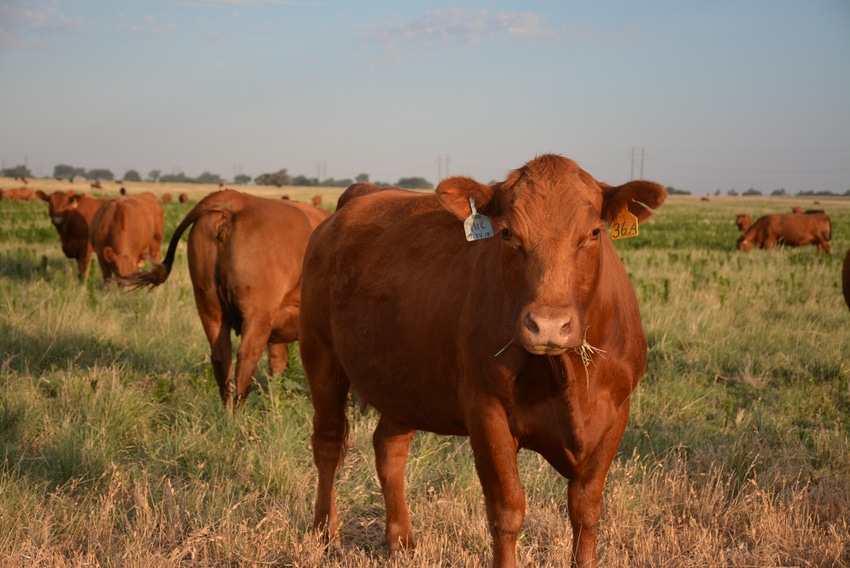
Warmer weather has the Texas Animal Health Commission (TAHC) warning farmers and ranchers of the growing animal health risks detected in recent weeks.
FEVER TICKS
TAHC livestock inspectors discovered fever ticks on cattle originating in Webb County during a routine voluntary inspection at a program dipping vat on April 23, 2019.
The premises where the cattle originated has been placed under quarantine and the cattle at the location have started treatment.
VESICULAR STOMATITIS
Vesicular stomatitis virus (VSV) was confirmed in horses on a Kinney County location, June 21, 2019. The National Veterinary Services Laboratories (NVSL) confirmed the virus as the Indiana serotype.
The horses were tested after the owner observed lesions on the horses’ muzzles and contacted a veterinary practitioner. TAHC has quarantined the premises, and there is no known exposure to other horses.
ANTHRAX
The first anthrax case of the year was confirmed in one captive antelope in Uvalde County on June 19, 2019.
“The premises is located within the triangular area of Texas where anthrax is historically found in the soil,” said Dr. Susan Rollo, State epidemiologist. “There is an effective anthrax vaccine available for use in susceptible livestock in high risk areas. We encourage you to consult with your local veterinary practitioner.”
The location is under quarantine.
EHM BIOSECURITY WARNING
Equine Herpes Myeloencephalopathy (EHM), the neurologic disease linked to Equine Herpes Virus (EHV-1), was confirmed in a Glasscock County Quarter Horse on April 16, 2019. This is the second case of EHM in Texas this year.
The positive horse attended a seven-day event at the Brazos County Expo Complex, Bryan, Texas, beginning April 1. Following the event, the horse attended a three-day barrel racing event at the Taylor County Expo Center, Abilene, Texas.
HEAT STRESS
In addition to animal diseases and a rise in risks associated with increased parasite activity and mosquito-borne diseases, heat stress is also a concern.
“In South Texas we saw a number of extremely hot days in late May this year, and June temperatures have been climbing even higher,” reports Dr. Joe Paschal, Texas A&M AgriLife Extension livestock specialist, Corpus Christi. “Combined with high humidity and a lack of wind, heat stress can quickly become a real problem for livestock and ranch workers.”
He says the first signs of heat stress are often cattle lying down in the shade.
“As they become more stressed, they generally will seek out ponds and tanks they can wade into. In more advanced stages, you can see them drooling from the mouth and nostrils and at this point you know you have a serious problem,” he adds.
The best protection for heat-stressed livestock is to make certain they have plenty of cool water to drink. While cattle may use stock ponds for wading, a source of clean water is a better option for drinking.
Depending on the degree of heat stress in cattle, it will result in reduced production and weight loss. Even with green forage available, cattle will tend to eat only in the cool hours of the morning before seeking shade and water.
“They eat less, burn more energy, and can reach a point of dehydration quickly under a hot sun. I find on a hot day that a rectal thermometer will show cows with body temps as high as 104 degrees,” Paschal says. “In dairy cattle and beef cattle that will slow down milk production and can ruin your chances of breeding animals. When semen is injected at 96 degrees into an animal with much higher body temps, the chances of embryo development is quickly reduced and even if it takes, there’s a chance it may not reach term.”
Paschal warns cattle can tolerate higher temperatures if the relative humidity is lower. The temperature-humidity index (THI) is a common approach to evaluating heat stress in dairy cattle, providing a single value to represent the combined effects of both temperature and humidity.
TAHC lists the following as signs of heat stress:
increased water intake or reduced feed intake − may be subtle and therefore difficult to recognize.
increased respiration rate (greater than 90 breaths per minute),
standing versus lying down
congregating under shade or at water sources
As both temperature and humidity play a significant role in heat stress, looking at the combined impact of these factors can help identify potentially dangerous conditions for cattle.
Resources
Excessive Heat and Your Livestock – TAHC
Wildfires and Your Livestock – TAHC
Tornadoes and Your Livestock – TAHC
About the Author(s)
You May Also Like






